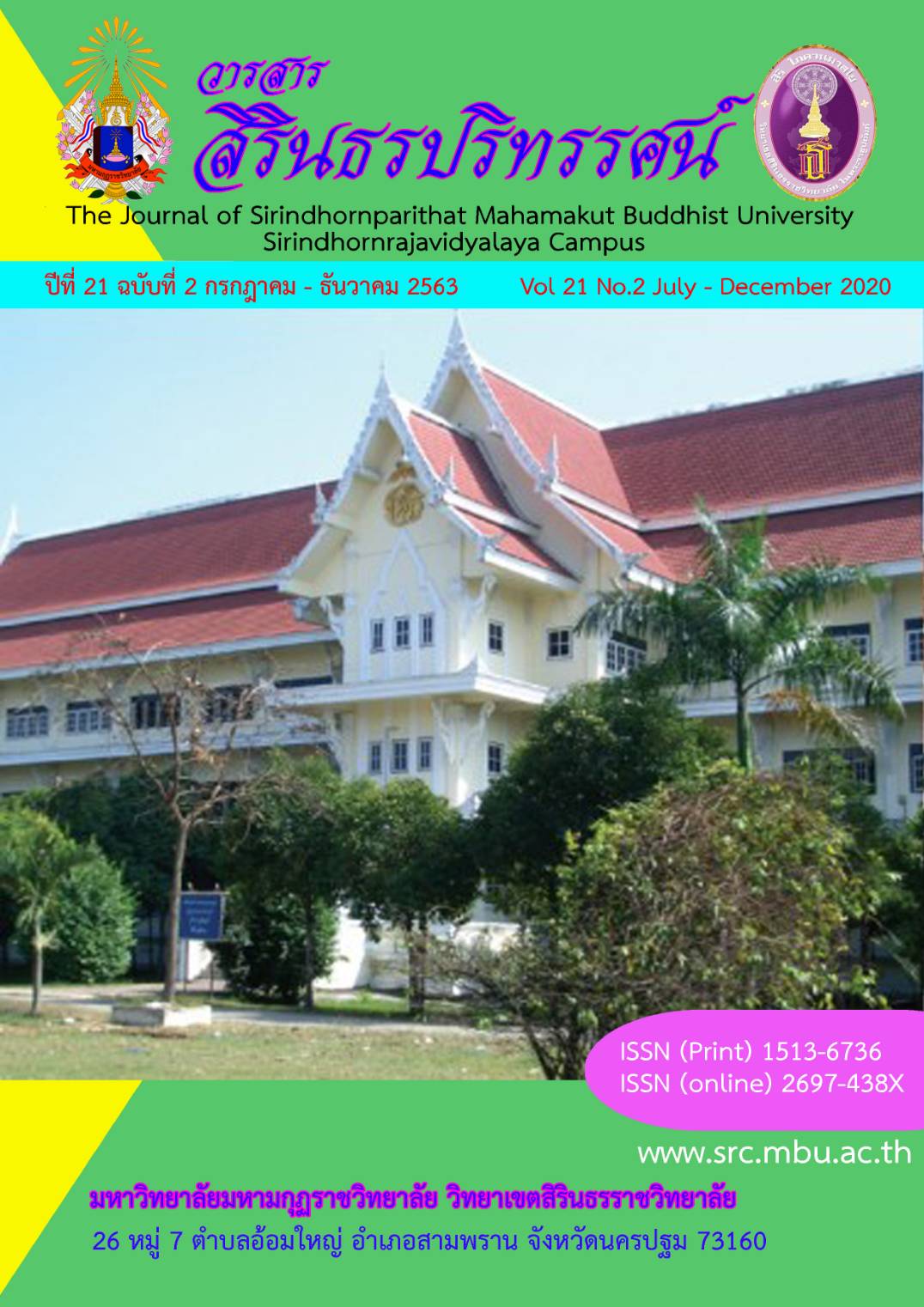The Model of Robot Applications without the replacement of the human careers in Thailand 4.0 according to the Buddhist Doctrines
Keywords:
Robots, Thailand 4.0, Three Equilibrium TheoryAbstract
This article is to present the model of Robot Applications without the replacement of the human careers in Thailand 4.0 according to the Buddhist Doctrines. This research was a qualitative study, focused on the documentary studies, mainly in the Tipitaka, the relating documentaries, and the Buddhist scholars’ works together with the depth interview of related experts. The results of the research are found as follows: 1) The application of the Robots in the Thailand 4.0 was modifying the structure of the whole production method in the Thailand Industry 4.0 from the production of ordinary products to be an innovative and creative product, therefore the introduction of “Robots and automation” was increasingly used. In order to be able to control the quality and quantity according to the international market required. 2) The Buddhist Dharma for the administration of manufacturing and using the robots was the right understanding being one of the eight elements of the Eightfold Noble Path interpreted and synthesized to be the Three Equilibrium theory as a tool or device of wisdom currently confronted with the problems that would be the allocation of work between humans and robots to see the solution for the problem of the robots competing for the human work to be an opportunity for the use of robots to the maximum benefit and promote the human work appropriately according to the Three Equilibrium theory. 3) The model of Robot Applications without the replacement of the human careers in Thailand 4.0 according to the Buddhist Doctrines was the production and use of robots to get the most efficiency and benefit of both the manufacturers or the entrepreneurs and the consumers or the workers and the society as a whole according to the Three Equilibrium theory to promote the collaboration in the society and supporting a paradigm shift for the purpose of life from aiming for the accumulation of individual and fragmented wealth to be the highest empowerment of humanity without causing any detrimental effects on the wealth of the individual in a new economic system called “Quantum Economics”.
References
เคลาส์ ชวาบ. (2561). “ทางรอดแห่งโลกใบใหม่ แห่ง การปฏิวัติอุตสาหกรรมครั้งที่สี่”. แปลโดย ศรรวริศา เมฆไพบูลย์. พิมพ์ครั้งที่ 4. กรุงเทพมหานคร : อมรินทร์พริ้นติ้งแอนด์พับลิซซิ่ง.
มหาจุฬาลงกรณราชวิทยาลัย. (2538). พระไตรปิฎกภาษาไทย ฉบับมหาจุฬาลงกรณราชวิทยาลัย. กรุงเทพมหานคร : โรงพิมพ์มหาจุฬาลงกรณราชวิทยาลัย.
มาร์ติน ฟอร์ด. (2561). “หุ่นยนต์ผงาด : เทคโนโลยีและภัยแห่งอนาคตที่ไร้งาน”. แปลโดย ทีปกร วุฒิพิทยามงคล, กรุงเทพมหานคร : ซอลท์ พับลิชชิ่ง.
ลีลาภรณ์ บัวสาย. (2548). เศรษฐกิจพอเพียง ร่วมเรียนรู้ สานข่าย ขยายผล. กรุงเทพมหานคร : สกว.
สมเกียรติ ไชยภูมิ. (2558). “รูปแบบความสัมพันธ์อย่างยั่งยืนระหว่างผู้บริโภคกับผู้ผลิตตามแนวทางพระพุทธศาสนา”. วิทยานิพนธ์พุทธศาสตรดุษฎีบัณฑิต, บัณฑิตวิทยาลัย : มหาวิทยาลัยมหาจุฬาลงกรณราชวิทยาลัย.
สัตยา นาเดลลา. (2559). “พลิกธุรกิจด้วยวิถีไมโครซอฟท์ (Hit Refresh)”. แปลโดย จารุจรรย์ คงมีสุข. กรุงเทพมหานคร : สำนักพิมพ์วีเลิร์น.
อนุสรณ์ ธรรมใจ. (2560, 23 ธันวาคม). “ผลของปัญญาประดิษฐ์ และหุ่นยนต์ต่อตลาดแรงงาน”. สืบค้นเมื่อ 4 มีนาคม 2562, จาก https://www.prachachat.net/columns/news-91819.
Downloads
Published
Issue
Section
License
บทความที่ได้รับการตีพิมพ์เป็นลิขสิทธิ์ของ มหาวิทยาลัยมหามกุฏราชวิทยาลัย วิทยาเขตสิรินธรราชวิทยาลัย
ข้อความที่ปรากฏในบทความแต่ละเรื่องในวารสารวิชาการเล่มนี้เป็นความคิดเห็นส่วนตัวของผู้เขียนแต่ละท่านไม่เกี่ยวข้องกับหาวิทยาลัยมหามกุฏราชวิทยาลัย วิทยาเขตสิรินธรราชวิทยาลัย และคณาจารย์ท่านอื่นๆในมหาวิทยาลัยฯ แต่อย่างใด ความรับผิดชอบองค์ประกอบทั้งหมดของบทความแต่ละเรื่องเป็นของผู้เขียนแต่ละท่าน หากมีความผิดพลาดใดๆ ผู้เขียนแต่ละท่านจะรับผิดชอบบทความของตนเองแต่ผู้เดียว




